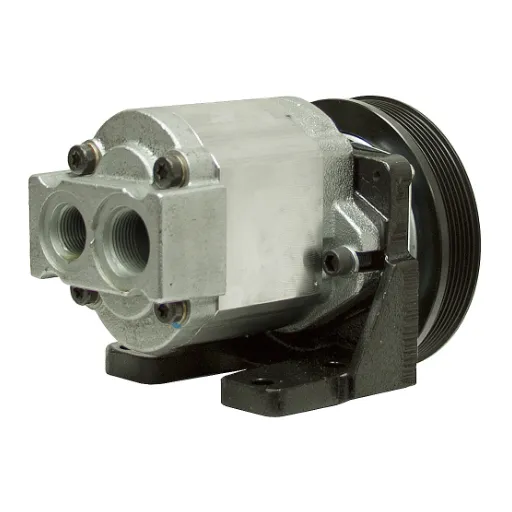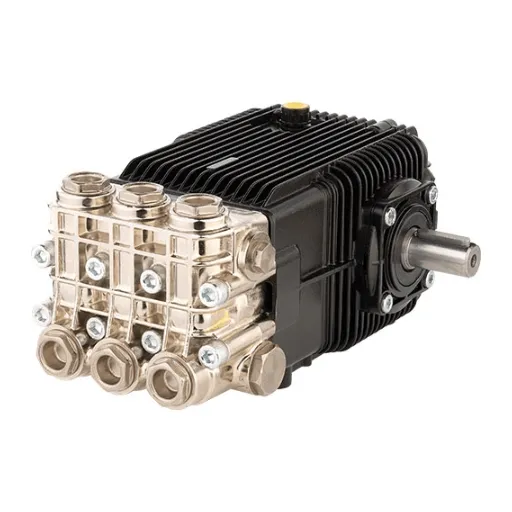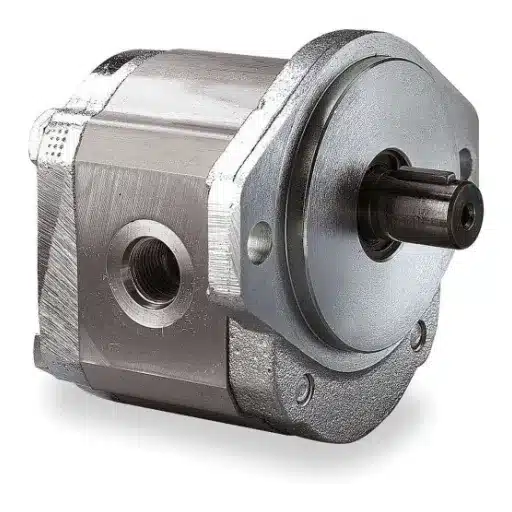Manual pump plungers are essential components in a variety of industrial, commercial, and domestic applications. Designed to enable controlled fluid transfer, these devices serve as reliable tools for situations where precision, efficiency, and simplicity are paramount. This guide aims to provide a comprehensive overview of pump plungers, exploring their fundamental design principles, the mechanics of their operation, and the critical considerations for their maintenance and optimization. Whether you’re a seasoned professional or new to the concept, this article will equip you with the knowledge required to master pump plungers and their applications, ensuring peak performance and longevity. Through a structured approach, we’ll break down key topics such as types of pump plungers, best practices for usage, and troubleshooting common issues, offering a detailed framework to enhance your expertise.
What are the different types of pump plungers available?

High-pressure plunger pumps for industrial use
Submersible pressure pumps used in industries tend to function at exceptionally high pressures which proves beneficial for them in carrying out demanding tasks. These pumps assist activities such as reverse osmosis, hydrostatic testing, and even high-pressure cleaning. Constructed from extremely durable materials such as stainless steel, they can withstand corrosive and harsh environments.
- Operating Pressure Range: The most common range varies between 2 and 300 bar, with some models being able to adapt to 1000-3000 bar which makes it suitable for these demanding tasks.
- Flow Rate: The flow rate usually falls somewhere between 2 and 300 liters per minute which makes it feasible for a variety of tasks.
- Motor Power: Depending on the scale and capacity needed, the range usually varies between 1kW to over 300 kW.
- Plunger Diameters: The range usually lies between 10 mm and 60 mm depending on the specific needs for pressure and flow.
- Material Composition: Plungers with ceramic or hardened stainless steel cores cover a few standard components that can minimize wear while optimizing efficiency, giving the device strength so it can perform better.
Proper selection of these factors will lead to the selection of a suitable high-pressure plunger pump which will guarantee maximum efficiency and reliability. Ensuring there is compliance to the manufacturer’s guidelines will go a long way in ensuring their long-term functionality.
Portable and battery-operated plunger pumps
The motors of a portable and battery-operated plunger pump are designed for mobility and ease of use. That too without compromising the areas of performance, these pumps are powered by rechargeable batteries. That makes them appropriate for situations where electrical sockets are absent.
- Flow Rate: Ideally, ranges from 0.5 to 5 GPM. This value highly depends on the methods where the liquid transfer is done. It does ensure portability, however.
- Pressure Rating: Operating pressures usually vary between 1000 PSI to 3000 PSI. This rating range makes them suitable for moderate to high-pressure settings within portable contexts.
- Battery Type: Lithium-ion batteries are the common battery types used because of their high energy density and low self-discharge rate.
- Battery Run Time: Depending on the pump’s specifications, the runtime can last from 30 minutes to over two hours on one charge. The conditions in which the flexibility is used, flow rate and pressure, highly govern the runtime.
- Weight and Dimensions: Today, most portable structures weigh under twenty pounds while maintaining their structural integrity.
With understanding these factors, I can select a suitable portable and battery-operated plunger pump that meets the operational requirements for the field.
How do you choose the right pump plunger for your needs?
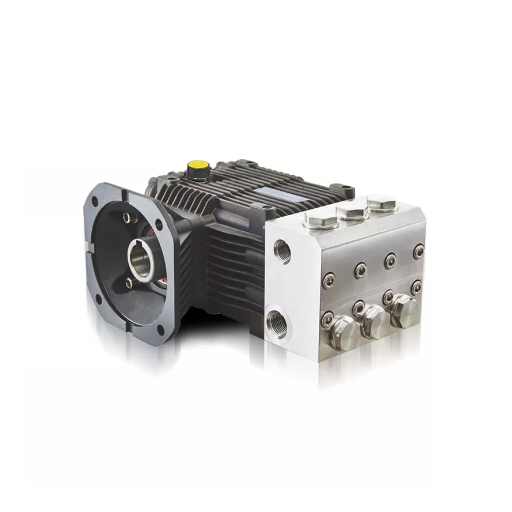
Considering pressure and flow requirements
In gauging the pressure and flow each pump plunger possesses, I make the consideration of what my particular application requires operationally. For proper performance, this includes deciding what the operational flow rate GPM) and pressure (PSI) need to be. As an example:
- Flow Rate (GPM): This depends on the amount of fluid to be moved within a specific period. For some applications 1-3 GPM is sufficient, however, industrial ones might go for anything over 10 GPM.
- Pressure (PSI): Cleaning or injection systems tend to need high-force ejection and as such, those systems will require anything over 1,500 PSI. On the other hand, more basic transfer or feed systems might function adequately with 200-500 PSI.
By putting these factors along with my target’s operational scope, I ensure the pump plunger performs proficiently while staying within the system’s tolerance levels and energy limits.
Evaluating materials: stainless steel, brass, and ceramic options
My assessment of materials that may be used for pump plungers includes their mechanical traits, corrosion resistance, and applicability under certain operational conditions.
- Stainless Steel: A superb selection for applications involving high pressure or high angle corrosion due to it being resistant to chemical attacks. For example, when exposed to saline solutions or acid, the performance of stainless steel is exceptional because of chromium content. Furthermore, it works well in temperatures above 1500 PSI and is particularly common in industrial and marine applications.
- Brass: Well adapted to medium pressure requirements (200-800 PSI) and areas that need good machinability and thermal conduction. Because of its high strength and resistance to dezincification, it is useful for potable water systems and systems that require electrical conductivity.
- Ceramic: It is highly resistant to wear and chemical aggression, making it fabulous for use in highly aggressive fluids or in cases where wear resistance is extremely important. In addition, it operates efficiently in high-pressure environments (1000-3000 PSI) and is normally used in slurry handling or processes involving hard particulates.
Considering the properties of varied fluid types, active and static pressures, and environmental conditions, material selection is made to ensure system efficiency and the long operational life of the equipment.
Assessing pump capacity and duty cycle
To determine the capacity of a pump, the operational requirements of the process must be taken into account like flow rate (GPM or m³/h). The flow rate is a function of the amount of fluid to be movedthe, the system head, and the network piping pressure.
- Flow Rate (Q): The volume of fluid the pump can deliver per unit of time.
- Total Dynamic Head (TDH): The static head plus the friction losses plus any other resistance within the scope.
- Power input: The energy required to attain pumping output targets.
The cycle of duty tells how often the pump is used and how long it operates, which is usually expressed in % terms. One needs to assess if a pump will run constantly or only in part since these aspects will determine the thermal characteristics, wear, and energy usage. Part duty may let cooling intervals, while steady duty necessitates tough thermal management coupled with advanced material engineering.
What are the advantages of using a plunger pump?

High efficiency and positive displacement capabilities
Plunger pumps exhibit superior efficiency due to their high volumetric and mechanical performance. Their positive displacement construction assures effective flow mechanisms enabling them to function under varying pressure conditions. This makes them valuable in works that require steady stream output. A plunger pump’s efficiency is expressed in terms of volumetric efficiency (ηv) and, depending on sealing conditions and operational status, can achieve values of 95% or better.
- Flow Rate: Determined with the aid of the pump’s plunger’s diameter, stroke length, and speed of operation. For example, 10 to 500 liters per minute l/min can be taken as typical flow rate figures for specific operations.
- Operating Pressure: Their design enables them to operate in pressures of 1,000 bar and over, categorizing them into high-duty industrial implement pumps.
- Material Durability: The use of hardened stainless steel alloys or ceramic plungers greatly enhances the resistance to wear, thus conveniently improving longevity under hostile operational life.
Due to their reliability, precision, and high adaptability, plunger pumps have proven to be valuable in the oil and gas, chemical injection, and high-pressure cleaning industries.
Versatility in handling various fluids and gases
The construction and fabrication of plunger pumps make them well-adjusted for working with a variety of fluids and gases. These pumps can perform the tasks of pumping liquids that range from low water viscosity and solvents to high viscosity slurry and oils. In addition, they are suitable for gases when used with adequate seals and configurations which makes them necessary in the food processing and petrochemical industry.
- Operating Pressure Range: Effective at operation up to or beyond 1,000 bars for use in high-pressure environments such as water jet cutting and chemical dosing.
- Temperature Tolerance: Impressive thermal tolerance from -20 to 150 degrees centigrade depending on building materials used in construction.
- Material Compatibility: Corrosive aggressive fluids are handled safely by using corrosion-resistant elements like stainless steel or ceramics.
- Flow Rate Control: Achievable flow control ranges temperatures operating in delicate applications of milliliters per hour to hundreds of liters per minute in industrial processes.
This combination of technical reliability under strenuous conditions makes plunger pumps suitable for any application that requires precision and flexibility.
Low maintenance and long-lasting performance
Plunger pumps are built for robustness and high efficiency, thus these pumps have very low maintenance requirements and longevity. As a result of using stainless steel and ceramic components which are durable and non-corrosive even during sustained use, these pumps achieve their long-lasting performance. Their design eliminates the need for regular maintenance which reduces the frequency and complexity of maintenance tasks. For instance, maintenance sessions could be stretched to as long as several months based on the operating conditions such as flow rate, pressure, and fluid type.
- Material Durability: Critical components such as seals having a mechanical loading and chemical attack are made from stainless steel or ceramics.
- Service Life of Seals: Dynamic seals made of PTFE or elastomers have an extended service life.
- Maximum Operating Pressure: The pump is capable of withstanding a maximum of 1000 bar pressure.
- Maintenance Frequency: For standard purposes, most users need to undertake maintenance once every 6-12 months.
Plunger pumps are the preferred option for tough industrial and scientific needs because of their reliability, reduced maintenance, and robust features.
How do you properly maintain and troubleshoot a pump plunger?
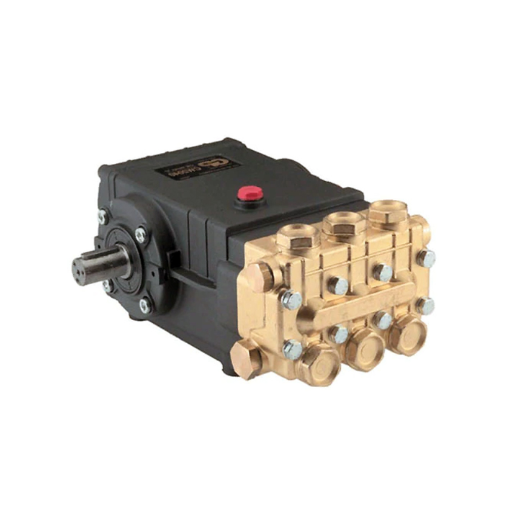
Regular cleaning and lubrication techniques
I center my strategies on following an optimal cleaning and lubrication schedule to simplify the upkeep and servicing procedures on a pump plunger.
- Cleaning Routine: While working in normal operations, I clean the pump plunger on a monthly rotation. However, in more extreme conditions like those that are highly dirty, I switch to weekly intervals. My cleaning process incorporates noncorrosive solutions that won’t harm the surface finish of the plunger while effectively removing build-up.
- Lubrication Protocol: Adding lubricant is done to my desired specification, with high-viscosity synthetic grease and lubricating oil being recommended. Plunger pumps that work under high-pressure conditions like 1,000 bars, and oil with a high viscosity need to be used. Adequate lubrication increases the efficiency of the entire system by lowering the friction and wear on parts.
- Technical Inspection: I check seals, plungers, and bearings for signs of wear or damage when I clean and pour lubricant. Any issues I find whether they’re scoring, abnormal wear patterns, worsening of seals, or pitting, I immediately swap those parts so that the equipment does not waste valuable time and increase downtime.
With these steps in sequence and time intervals, I can maximize the functionality of the pump plunger and avoid damaging the internal components.
Identifying and fixing common plunger pump issues
The most common issues with plunger pumps include cavitation, leakage, irregular output pressure, and excessive vibration.
- Cavitation: To deal with cavitation, I check the inlet supply for any flow restrictions. It is imperative to take care of the calculated positive suction head (NPSH), which, in most cases, is taken care of by leaving the head at least 1-2 meters above the minimum NPSH required by the pump. I also ensure that the suction line is of the correct diameter and that it isn’t blocked.
- Leakage: While diagnosing for leakage, I ensure to examine seals and packing material because they are the most likely causes. The sealing gaskets can be replaced together with the packing loosened, while the torque specifications that the manufacturer suggests for the equipment can be adhered to. Most of the leakage is then resolved.
- Irregular output pressure: Before anything, in the case of erratic pressure, I check the valves for any obstructions, wear, or damage. Cleaning or replacing valve seats and springs remedy proper functioning. Then I check the setting of the pressure relief which should not exceed the working pressure, which, for a majority of uses, is between 500-1500 psi for most applications.
- Excessive vibration: If the equipment is excessively vibrating it often means that there is some misalignment or insufficient mounting on the equipment. I check the angular and parallel alignment with a laser alignment tool to guarantee that the tolerances are within 0.05mm. Moreover, all the fasteners are checked to make sure that they are tightened and any plunge or pump parts that could be out of balance are examined.
I recognize that by methodically solving these problems with effective diagnostics and respecting the technical requirements, I guarantee the desired efficiency and durability of the plunger pump.
What are some common applications for pump plungers?

Industrial and commercial uses of plunger pumps
In my perspective, the versatility of plunger pumps makes them useful in the majority of industrial and commercial activities because they can be precisely controlled to achieve certain flow rates while also managing high pressures. Following are some common uses I observe:
- Oil and Gas Sector: Plunger pumps are often used for the injection of water or chemicals into high-pressure injection wells. These operations are required to be performed at 10,000 psi at most to facilitate functioning under extreme circumstances.
- High-Pressure Washing: They are very popular in high-pressure cleaning services for industrial plants and buildings. In a manufacturing plant, plunger pumps are capable of achieving pressures of over 3,000 to 5,000 psi, which is efficient in purging dirt and other particles from the machines.
- Reverse Osmosis Systems: I also used plunger pumps in desalination plants which usually work at pressure heads ranging from 800 to 1200 psi when water is driven through semi-permeable membranes for filtration.
- Hydrostatic Testing: These pumps are perfectly suited for the testing of vessels and pipelines. Depending on the specifications of the vessel up to 15,000 psi can be used for generic systems while specialized systems can reach 30,000 psi.
- Car Wash Facilities: On a smaller commercial scale, plunger pumps are used in automated car wash systems, as they are efficient with car washing under pressures between 1,000 to 2,500 psi.
By understanding the intricate details and keeping these pumps well-maintained, I guarantee their efficiency for every one of these paramount uses.
Household applications: from clogged toilets to pressure washing
Due to delivering water at high pressure, plunger pumps are useful in many household activities. One of them is unclogging toilets, where a portable plunger pump can exert pressure between 50 and 200 psi, which is enough to unclog blockages without causing any damage to the plumbing system as long as the pipes are well-maintained and within standard tolerances.
Another popular household task is pressure washing, where plunger pumps are integral in cleaning driveways, patios, siding, and other exterior surfaces. Domestic pressure washers usually function between 1,500 and 2,800 psi, which provides sufficient cleaning power while preventing harm to residential materials. More advanced residential systems often have adjustable nozzles and flow rates, allowing the user to change the pressure according to the surface type.
To ensure optimum performance and prolong the service life of the pumps, households should ensure regular maintenance and calibration. Putting seals, valves, and hoses under regular inspection also guarantees operational safety and efficiency.
Frequently Asked Questions (FAQs)
Q: What is the difference between a piston pump and a plunger pump?
A: While piston and plunger pumps are both positive displacement pumps, the main difference lies in their design. In a piston pump, the seal is stationary and the piston moves back and forth within the cylinder. In a plunger pump, the plunger slides through a stationary seal called a stuffing box. Both types are effective for manual pumping, but plunger pumps are often better suited for higher pressures and more consistent output.
Q: How does a manual pump operate compared to an electric pump?
A: A manual pump, such as a piston or plunger pump, operates by using human power to reciprocate the piston or plunger, creating suction and discharge to move fluid through the pump. Electric pumps, on the other hand, use motors to generate the pumping action. Manual pumps are often more eco-friendly and don’t need electricity, making them suitable for remote locations or emergencies.
Q: What are the advantages of using a piston pump for a sink or bath?
A: Piston pumps are advantageous for sinks and baths because they are self-priming, which means they can easily start pumping even if there’s air in the system. They also provide consistent flow rates and can handle higher pressures, making them efficient for household plumbing. Additionally, piston pumps are relatively simple in design, which can lead to lower cost of ownership and easier repairs compared to other pump types.
Q: How do piston and plunger pumps compare to centrifugal pumps in the industry?
A: Piston and plunger pumps are positive displacement pumps, while centrifugal pumps use rotational energy. Positive displacement pumps are better suited for applications requiring high pressure and consistent flow rates, regardless of pressure changes. They’re often used in industries where precise fluid control is needed. Centrifugal pumps, however, are typically used for moving large volumes of fluid at lower pressures and are less expensive for high-flow, low-pressure applications.
Q: What is the mechanism behind a pneumatic plunger pump?
A: A pneumatic plunger pump uses compressed air to drive the plunger back and forth within the pump chamber. This motion creates suction and discharge, moving the fluid through the pump. The pneumatic mechanism allows for smooth and consistent operation, making it suitable for applications where electric power is unavailable or undesirable. These pumps are often used in industries requiring precise fluid control and where compressed air is readily available.
Q: Are there any eco-friendly options for manual pumps?
A: Yes, manual pumps are inherently more eco-friendly than their electric counterparts as they don’t require electricity to operate. These pumps often use fewer materials in their construction, have a longer lifespan, and are easier to repair, reducing their overall environmental impact. Additionally, their manual operation makes them ideal for use in remote areas or during power outages.
Q: What are some common applications for plunger pumps in everyday life?
A: Plunger pumps have various applications in everyday life. They are commonly used in household items such as manual water pumps for wells or gardens, pressure washers for cleaning, and even in some types of coffee makers. In the bathroom, you might find them in hand soap dispensers or lotion pumps. Some manual car jacks also use a plunger pump mechanism. These pumps are valued for their simplicity, reliability, and ability to generate high pressure with relatively little effort.





